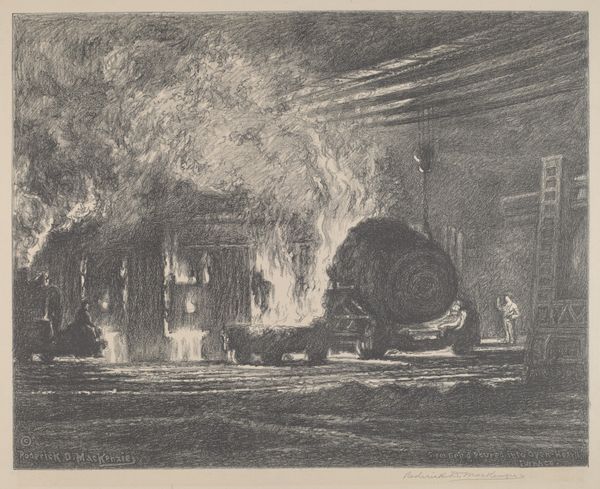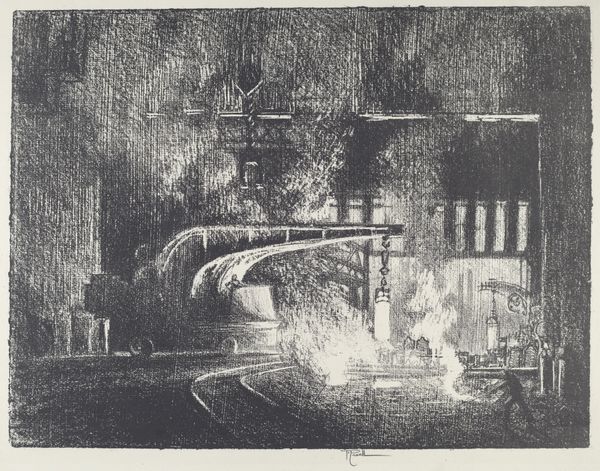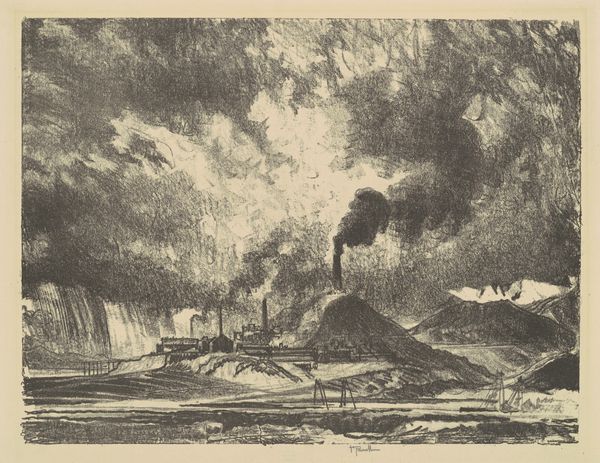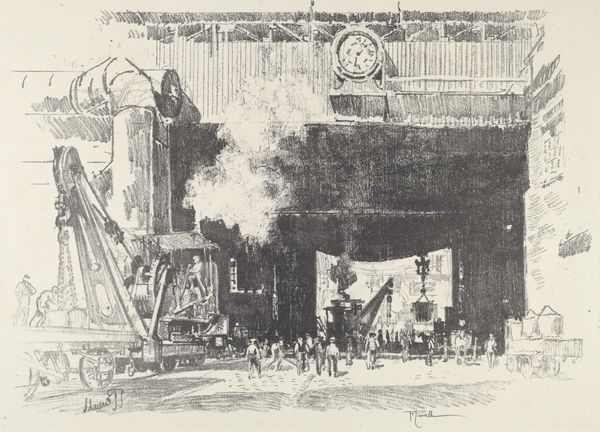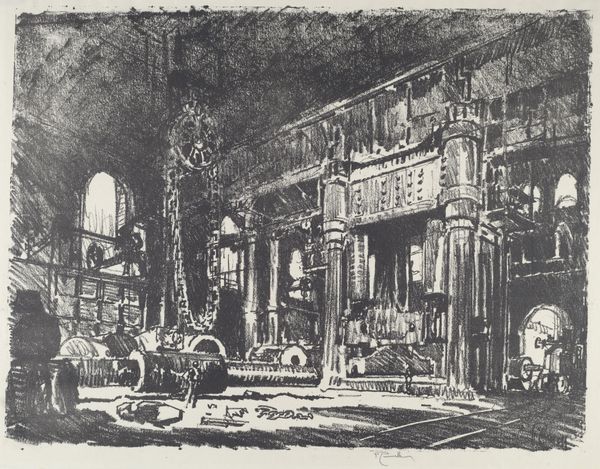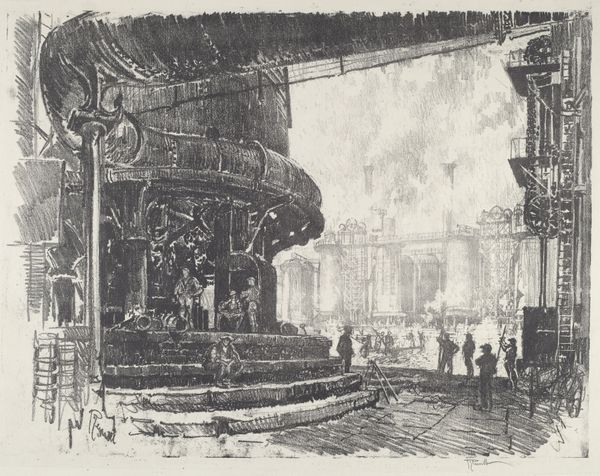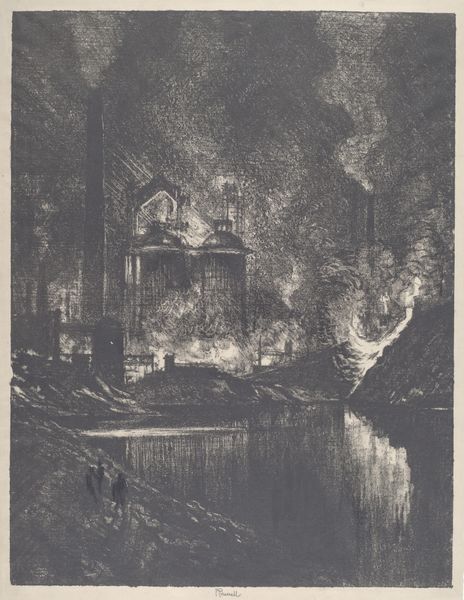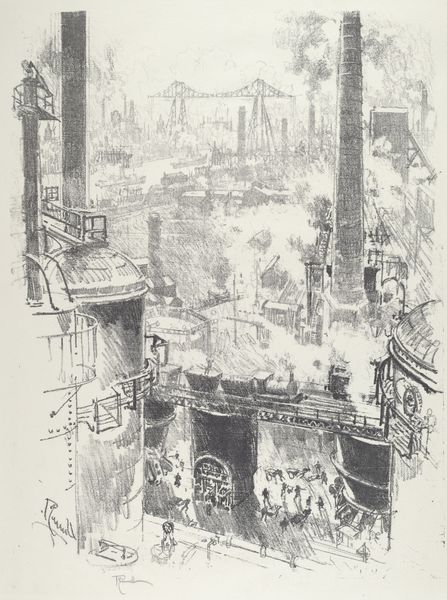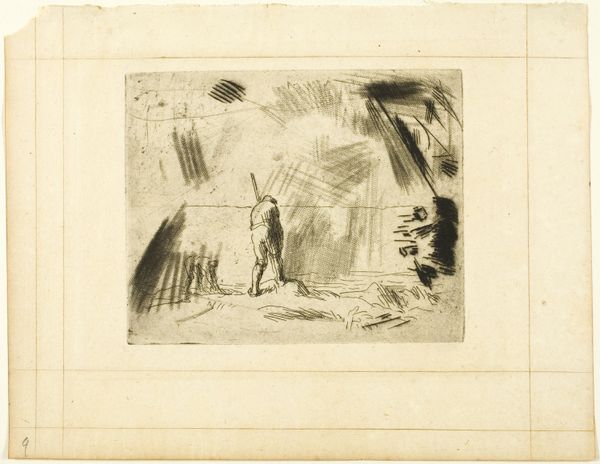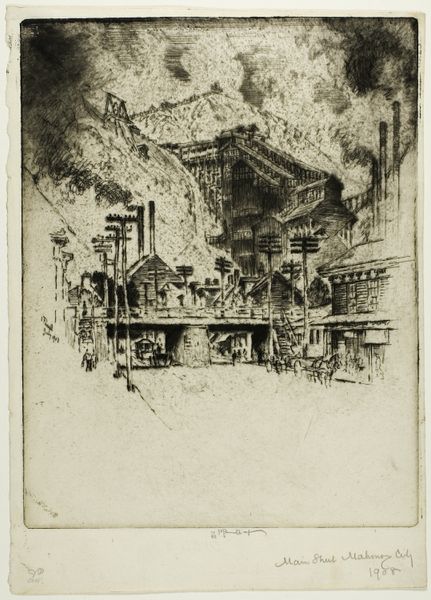
graphic-art, print, etching
#
graphic-art
# print
#
etching
#
realism
Copyright: National Gallery of Art: CC0 1.0
Editor: Here we have Joseph Pennell's 1916 etching, "Making Armour-Plate." The print plunges us into a gritty industrial space, seemingly at the height of war production. It feels both epic and claustrophobic. What social commentary might Pennell be making here? Curator: A vital question. Pennell was deeply embedded within artistic and political debates about industrialization and its role in society. His works, particularly during wartime, often walked a fine line between celebrating American industrial power and critiquing its dehumanizing effects. Consider, the title suggests creation, yet what is being made is 'armour-plate' - linked intrinsically to the tools of war and destruction. Does Pennell celebrate progress, or lament a world consumed by conflict? Editor: I see the tension. The figures appear small, almost insignificant, against the backdrop of massive machinery. There’s something heroic, but also a little tragic about their scale. Curator: Precisely. Look at how the architecture, particularly the looming structures overhead, seems to dwarf the workers. The composition itself emphasizes the power structures inherent within this scene. Who benefits from this labour, and who bears the burden? Are they participating in an industrial sublime, or trapped within its gears? The politics of imagery always need deciphering, from production, circulation to audiences. Editor: So, Pennell's print serves not just as a record, but also as a question mark, prompting us to examine the societal costs of progress? Curator: Absolutely. It’s an etching deeply rooted in the socio-political context of its time, forcing us to confront the complex relationship between industry, war, and the human cost, a poignant reminder of art's capacity for historical commentary and continued contemporary reflection. Editor: I hadn't considered the deliberate visual choices as prompts to question social structures, that's a fascinating dimension! Curator: It reveals how the power dynamics in the museum space too play a significant part in interpreting an artwork, who's doing the talking and whose voice we are foregrounding is just as significant as the art.
Comments
No comments
Be the first to comment and join the conversation on the ultimate creative platform.
